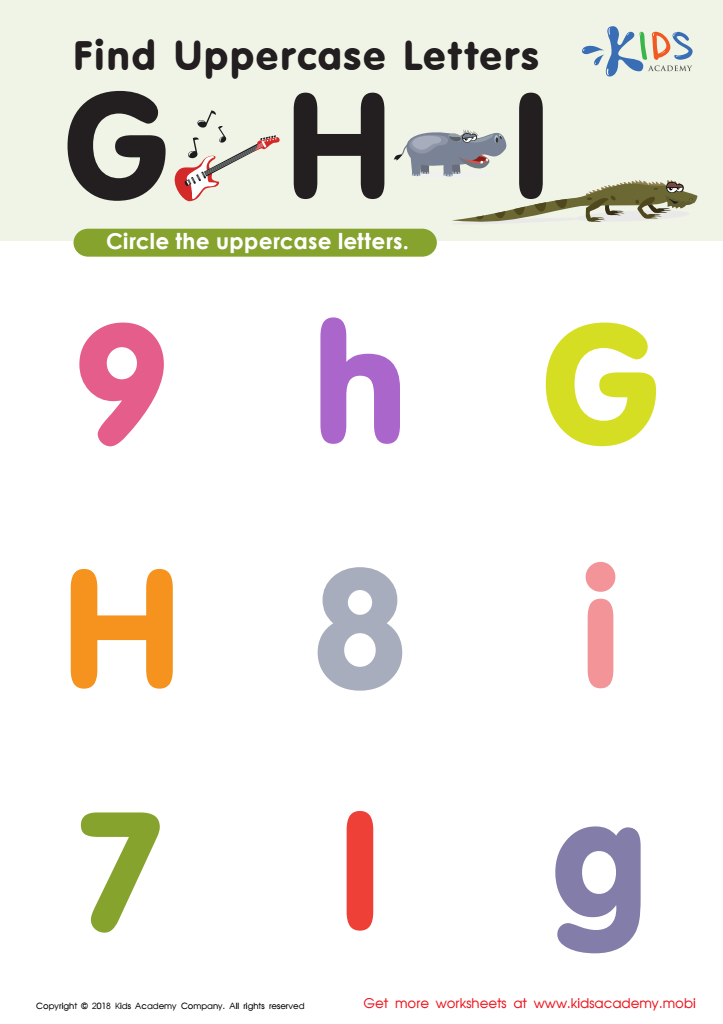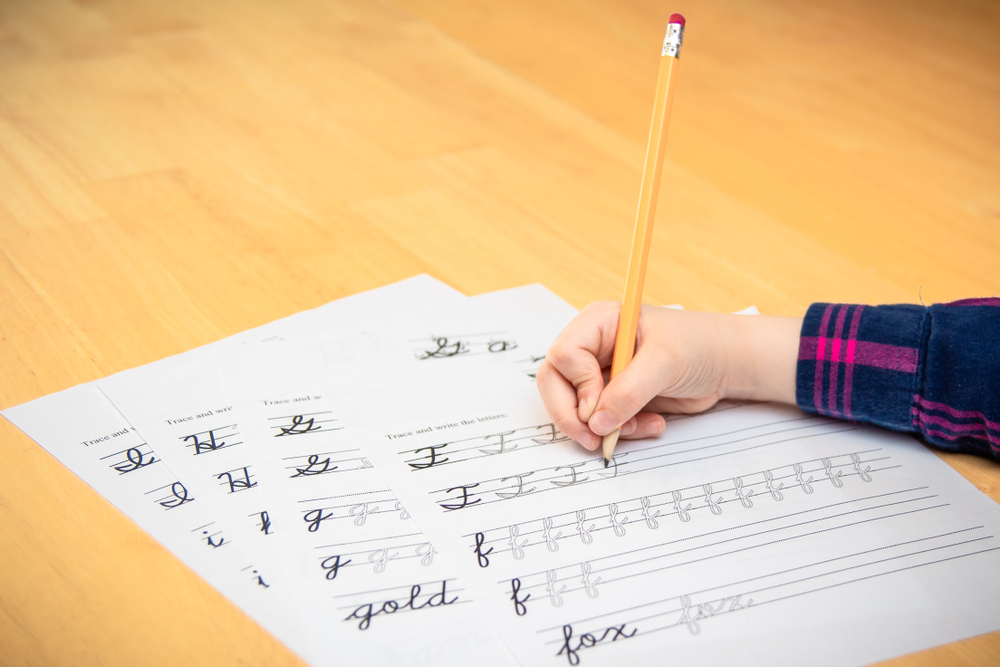Alphabet familiarity Normal Uppercase Letters Worksheets for Ages 4-6
4 filtered results
-
From - To
Discover engaging Alphabet Familiarity Normal Uppercase Letters Worksheets designed for children ages 4-6 on our site! These worksheets are tailored to help young learners recognize and master uppercase letters through interactive and fun activities. By working through various exercises, children will enhance their cognitive skills while building a strong foundation for reading and writing. Our carefully crafted materials ensure that learning is enjoyable, boosting their confidence in literacy. Ideal for home or classroom use, these worksheets provide an excellent opportunity for children to explore the alphabet creatively. Start your child’s literacy journey today with our seasonal and seasonal resources!


Find Uppercase Letters G, H, and I Worksheet


Find Uppercase Letters Worksheet


Find Uppercase Letters J, K, and L Worksheet


Find Uppercase Letters A, B, and C Worksheet
Alphabet familiarity, particularly with uppercase letters, is crucial for children ages 4-6 for several reasons. Firstly, recognizing uppercase letters lays the groundwork for reading and writing skills. At this stage, children are often introduced to basic literacy concepts, and uppercase letters appear more frequently in books and print materials. Familiarity with these letters enhances their confidence and encourages them to engage with text.
Additionally, uppercase letters are essential for children's identity, as they learn to write their names, a key marker of individuality. This fosters not only writing skills but also boosts self-esteem and a sense of achievement. Furthermore, in early education, uppercase letters are typically used for foundational concepts in phonics, aiding children in phonemic awareness, where they learn the sounds associated with letters.
Parents and teachers play pivotal roles by reinforcing letter recognition through fun and interactive activities such as games, reading aloud, and using flashcards. Encouraging this familiarity within a supportive environment nurtures a love for learning and paves the way for academic success. Overall, caring about alphabet familiarity is an investment in a child’s educational journey and personal development.
 Assign to My Students
Assign to My Students















